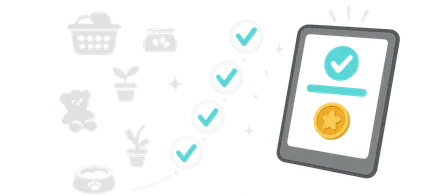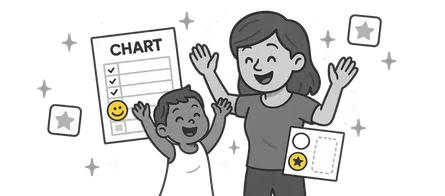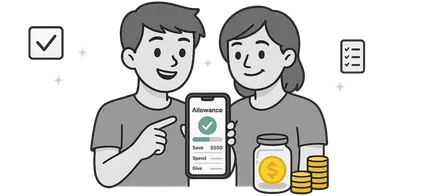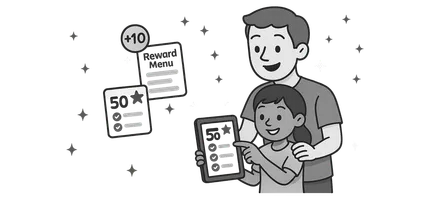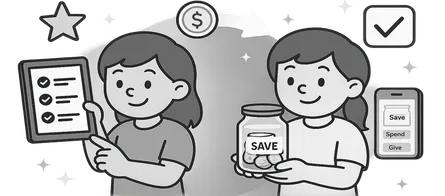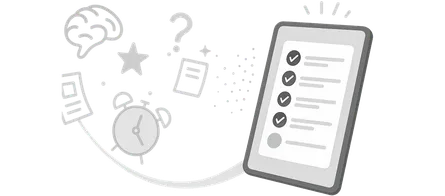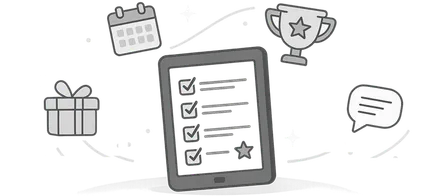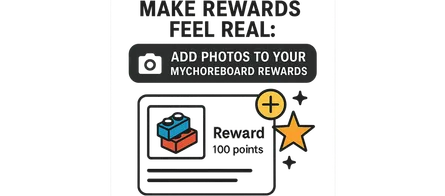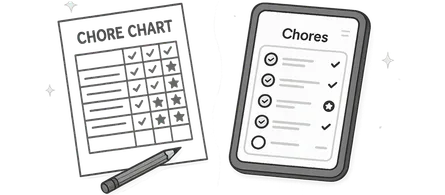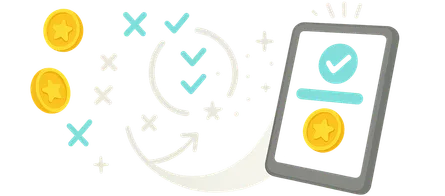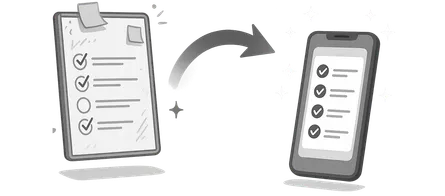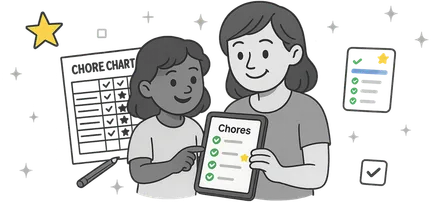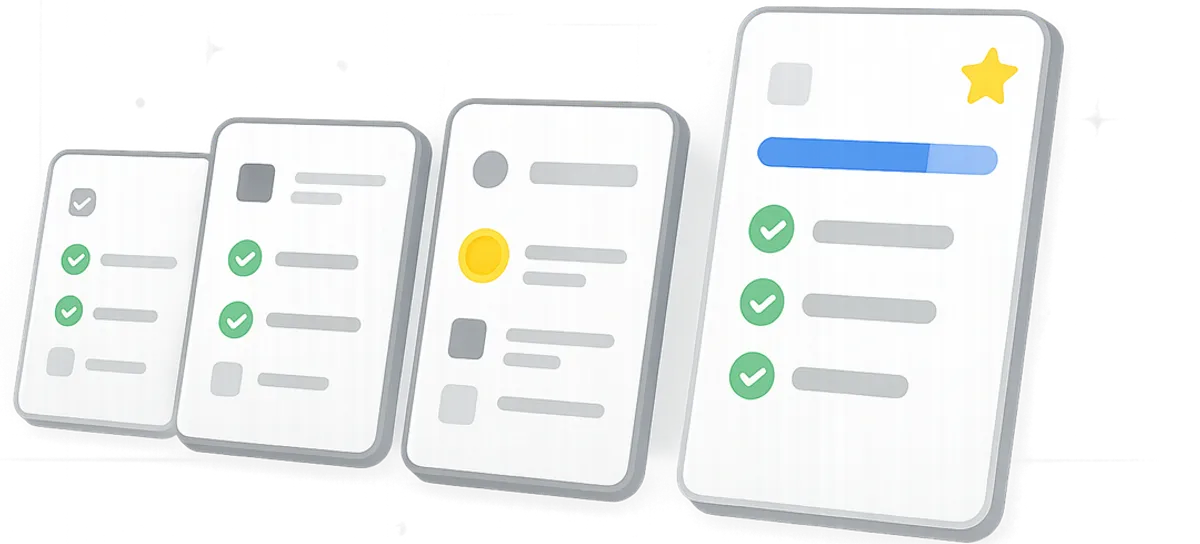
Best Free Chore Apps in 2025: Honest Feature Comparison
- Jacob Volk
- Parenting , Habits
- 20 Sep, 2025
Choosing the right chore app can make or break your family’s daily flow. Some apps promise motivation but end up turning chores into competitions. Others look simple at first—until you realize you can’t share data between parents, or that the “free” version hides all the useful features behind a paywall.
This guide breaks down the most popular free chore apps of 2025, comparing what real parents care about most: ease of use, multi-child setup, rewards and allowance handling, and how well they support modern families who may be juggling two homes.
If you’ve ever tried keeping paper charts updated or bounced between half-working apps, this is for you.
New here? Start with the hub: The Ultimate Guide to Free Chore Apps for full definitions, setup steps, and FAQs.
Top Free Chore Apps (vs MyChoreBoard)
Below you’ll find an at-a-glance breakdown of seven leading apps used by parents worldwide. These ratings focus specifically on their free tiers—what you get without upgrading or subscribing.
| App | Free Tier / Cost | Chore Grouping & Scheduling | Rewards / Allowance | Multi-Kid & Split-Home | Notes & Common Complaints |
|---|---|---|---|---|---|
| OurHome | Free with optional upgrades | Yes — chores, repeating tasks | Yes — reward / point system | Good family support | Basic parental oversight; shallow allowance/finance features |
| Sweepy | Freemium | Yes — daily schedule, rooms prioritization | Yes — points & leaderboards | Family device syncing | Some parental controls; rigid points/reward customization |
| Chores & Allowance Bot | Free core + paid upgrade | Daily / weekly / monthly chores | Yes — chore→allowance mapping | Multi-child & sync | Approvals & passcode available; ledger/history limited on free tier |
| Chorsee | Free + premium tiers | Yes — chore scheduling | Yes — rewards / allowance | Multiple kids supported | Basic oversight; reported sync issues after upgrades |
| Nipto | Freemium | Yes — game-style chores | Yes — points / competition | Supports split homes/roommates | Basic oversight; game-first feel (less routine logic) |
| iAllowance | One-time purchase | Yes — chores & rewards | Yes — flexible reward schemas | Multi-kid support | Strong oversight; limited advanced finance integrations |
| ✨ MyChoreBoard | Completely Free (no ads) | Yes — morning / anytime / evening | Yes — points, rewards, allowance tie-ins | Built for split homes & sync | Parent approvals + history/audit; focused on sustainable routines |
This comparison focuses on the free tier (or lowest-cost entry). Paid upgrades vary widely and often unlock analytics or allowance tracking, but most families can get started without them.
Strengths & Tradeoffs: What Each App Brings to the Table
Each app on this list has its fans—and its blind spots. Some shine with playful visuals but lack flexibility for real-world routines. Others emphasize budgeting or automation but forget the fun that keeps kids engaged. Here’s a closer look.
OurHome
- Strengths: Excellent free tier and a long track record with families. Its reward system feels intuitive and easy for younger kids.
- Tradeoffs: Doesn’t dig deeply into allowance tracking or financial automation—parents looking to tie chores directly to money will find limits.
Sweepy
- Strengths: One of the most polished interfaces in this category, with bright visuals and gamified points that appeal to older kids.
- Tradeoffs: The rigid point and leaderboard setup can make customization tricky for families who prefer flexible goals or collaborative rewards.
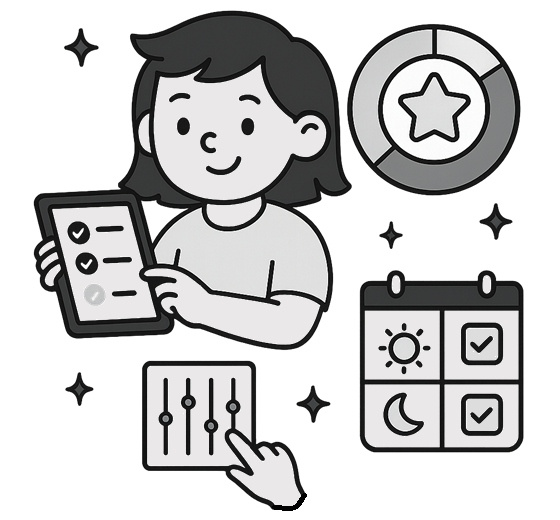
Chores & Allowance Bot
- Strengths: Strong parental controls, password protection, and clear tie-ins between chores and allowance.
- Tradeoffs: Some of its best features—like detailed ledgers or automation—are paywalled, making the “free” version feel partial.
Chorsee
- Strengths: Offers simple task tracking and built-in reward options that work well for small families.
- Tradeoffs: Users report occasional syncing issues after updates, which can cause confusion when tasks don’t appear the same on every device.
Nipto
- Strengths: Unique game-style competition model that’s great for sibling motivation and co-parented homes.
- Tradeoffs: Because it leans so heavily on competition, it may not suit families looking to reinforce calm consistency and shared responsibility.
iAllowance
- Strengths: Straightforward and ad-free with a one-time purchase. Its flexible reward schemas give parents freedom to manage both chores and payments.
- Tradeoffs: Doesn’t integrate deeply with family finance tools or scheduling apps, so it feels a bit dated next to newer platforms.
When Chore Apps Try to Do Everything
Some chore apps lose their focus by trying to become “family super-apps.” They don’t just manage chores—they include shared calendars, meal planning, messaging centers, grocery lists, even homework trackers.
While this sounds appealing, these “do-it-all” apps often suffer from feature bloat. The interfaces become cluttered, the setup takes forever, and parents end up using only 10% of the tools. Kids, meanwhile, can get overwhelmed or tune out completely.
In most homes, the goal isn’t to replace every organizational tool—it’s to create a clear, repeatable rhythm that kids can actually stick to. Simplicity drives consistency. That’s why chore-focused apps like MyChoreBoard keep things lean and purposeful: everything visible, everything actionable, nothing extra to distract.
👉 Are you thinking about an allowance app? Read Chore Apps vs Allowance Apps: What’s the Difference?.
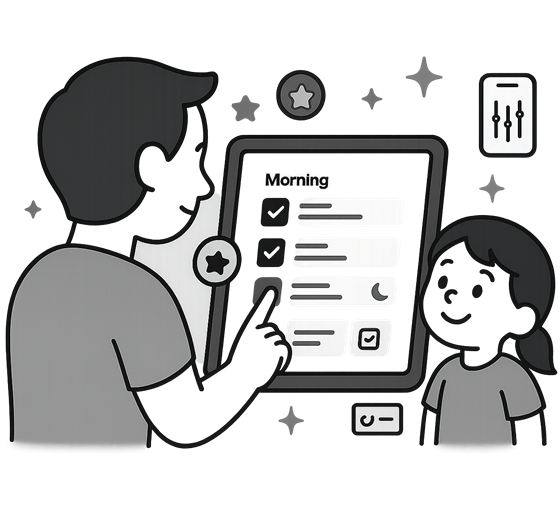
When Gamification Goes Too Far
On the other end of the spectrum are apps that lean hard into gamification—turning chores into competitions, battles, or elaborate reward systems. These apps can work wonders at first, especially for reluctant kids, but over time the novelty wears off.
Parents often report “reward fatigue,” where kids start asking “what do I get?” for every small task, or disengage entirely when the points stop feeling exciting. Too much game and not enough structure can turn responsibility into a short-term gimmick.
Healthy gamification—like MyChoreBoard’s points and badges—is meant to build intrinsic motivation, not replace it. The goal isn’t to entertain kids into cleaning their room, but to help them build consistent habits that stick even when the screen is off.
Why MyChoreBoard Wins in 2025
MyChoreBoard was built from the ground up for families who want structure without stress. It blends habit-building and positive reinforcement—without clutter, ads, or subscriptions.
- A balanced mix of routine logic + light gamification
- Completely free (and ad-free) forever
- Syncs effortlessly across split homes and multiple devices
- Parents can review and adjust rewards, history, and routines anytime
- Designed to grow with kids — from simple picture-based chores to allowance tracking and early financial lessons
What truly sets MyChoreBoard apart is its design philosophy: every screen is built to reduce mental load, not add to it. Instead of layering on more features—calendars, chat, meal planning—it keeps families focused on just one goal: building daily habits that actually stick. The interface is bright, simple, and designed for real-life use by both parents and kids.
Parents in early testing say it’s the first app their kids “actually wanted to check each morning.” Families who’ve switched from printable charts report less nagging, smoother mornings, and more follow-through — even across two households.
Unlike most apps in this category, MyChoreBoard doesn’t just motivate — it teaches consistency, autonomy, and responsibility in a way that fits every family structure.
Frequently Asked Questions
- Look for strong syncing and consistent task states. MyChoreBoard, Nipto, and Chores & Allowance Bot all support multi-home families.
- Mixed feedback. They spark initial engagement, but sustainable habits usually come from structured routines + flexible rewards. MyChoreBoard blends both.
- Many apps gate features behind upgrades or show ads. MyChoreBoard keeps core features free, with no ads.
- Most free chore apps stop short of true money transfers. They often track points or “virtual currency” instead. MyChoreBoard links effort to real-world rewards but keeps payment control with parents—perfect for families teaching financial responsibility without handing over full access.
- Yes—most chore apps allow child accounts or PIN-protected profiles. In MyChoreBoard, each child has a simple, visual dashboard so they can mark tasks complete without needing full app access.
- Around ages 4–5, kids can begin recognizing visual task cues (like icons or photos). By 8–10, they’re ready for points, streaks, and goal tracking. MyChoreBoard grows with them by adjusting visuals and reward logic.
- Yes—but the goal is to reduce constant reminders. Chore apps make progress visible and automate the follow-up loop. MyChoreBoard includes parental approvals so you can verify completion before points or rewards are added.

Ready to try MyChoreBoard with your kids?
Install on any phone, tablet or computer. Free with no sign-in hoops.
Get Started Now